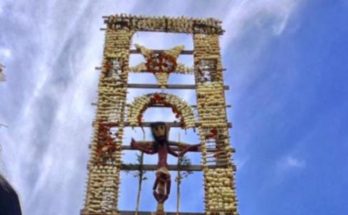By José Arturo Morales Tirado
Perhaps two of the most ancient rituals of human beings on the entire planet are: First, in the most primitive, profound sense, meetings around the hearth that commemorate the connection between ourselves and the spirit and contain memory, admiration, and exaltation of the living and the dead. And secondly, the rituals, myths, and subsequent worship of the dead and death. Both are linked to our natural environment at the origin of civilization and have evolved over thousands of years in our cultural environments.
Even though there are no absolute truths in science, the following hypotheses are still worth considering. Although it may be cliché, it’s worth restating that when working in science and generating knowledge, there are no absolute or completed or determining truths. With that in mind, consider that humans are the single species, homo sapiens, but with widely varying phenotypes. That is, human beings all appear different based on how our environment influences our genotype (genetic makeup).
Miguel León Portilla postulates that between 4,000 and 6,000 years ago, human beings generated six distinct, original civilizations in specific areas of what are now Asia, Africa, Eurasia, and the Americas. The first civilizations developed out of the early agricultural practices that led to settled communities. The early agrarian communities developed around certain staple crops: Rice farming developed around the Huan-Ho and Yangtze Quian rivers in what is now China. Wheat farming led to the development of civilization around the Himalayan-born Indus river in what is now India, the Nile river in Egypt, and Mesopotamia around the Euphrates and Tigris rivers. In the Americas, corn and potato agriculture led to advanced early civilization in the Andes, and in our region, teosinte (corn), squash, beans, chili, and other crops led to the development of the Mesoamerican civilization. San Miguel de Allende and the Tierra Adentro frontier (the Mexican altiplano) are on the northern margin of the Mesoamerican volcanic valleys and are within the ancient Mesoamerican sphere of influence, drawing on more than 2,500 years of cultural tradition and evolution.
Something worth noting in the origin of these first civilizations is the deep, organic observation of the duality of different complements found in the natural environment: the feminine and the masculine; the night and the day; the moon and the sun; the underworld below and the world above; fertility and barren drought; surface water and underground water; rainwater and moisture in the clouds; and in our latitudes (on average 20 degrees north), the duality of seasons, the spring/summer and autumn/winter. The annual agricultural cycles are clearly and robustly projected in Mesoamerican through the five points of the quincunx.
These first civilizations closely observed the sky, watching the Sun, the Moon, Venus, the Milky Way, the stars, and the constellations. They recorded the cyclical phenomena they observed and created agricultural calendars around celestial events like the equinoxes, solstices, and the zenith (subsolar) days found here in the tropics.
Out of this, our ancestral communities were created, developing a primitive worldview that grew into early civilizations. Leaders in the early Mesoamerican agricultural communities and the other five original civilizations began to direct and govern their communities. As people developed myths and rituals that communities coalesced around, leaders began to use myth and ritual to better govern. With improved organization, the first religious systems were born.
Carl Jüng describes it as the myth paves the ritual, and the ritual then paves the way back to the myth. In Mesoamerica, this is seen with myths surrounding death and the dead being ritualized through the dates of the Days of the Dead. By continually returning to ritual, we are reminded of the mythology and what the mythology represents. In one evolution of this phenomenon, Joseph Campbell notes in contemporary films such as “Star Wars,” the worldview becomes intensely polarized. Instead of a complementary duality, the worldview becomes a Manichean struggle between opposites: for example, between good and evil, between paradise and hell, between glory and pain.
In our Frontera Tierra Adentro, two diametrically different worldviews came together syncretically, like an amazing cultural wonder. They evolved with all the complexity and depth of the Mesoamerican tradition and the Catholic tradition, introduced by the Spanish five centuries ago, markedly coming together in commemorations and celebrations such as the Days of the Dead.
A Wonder of our culture that we will continue addressing next week. arturomoralestirado@gmail.com www.tasma.com.mx




